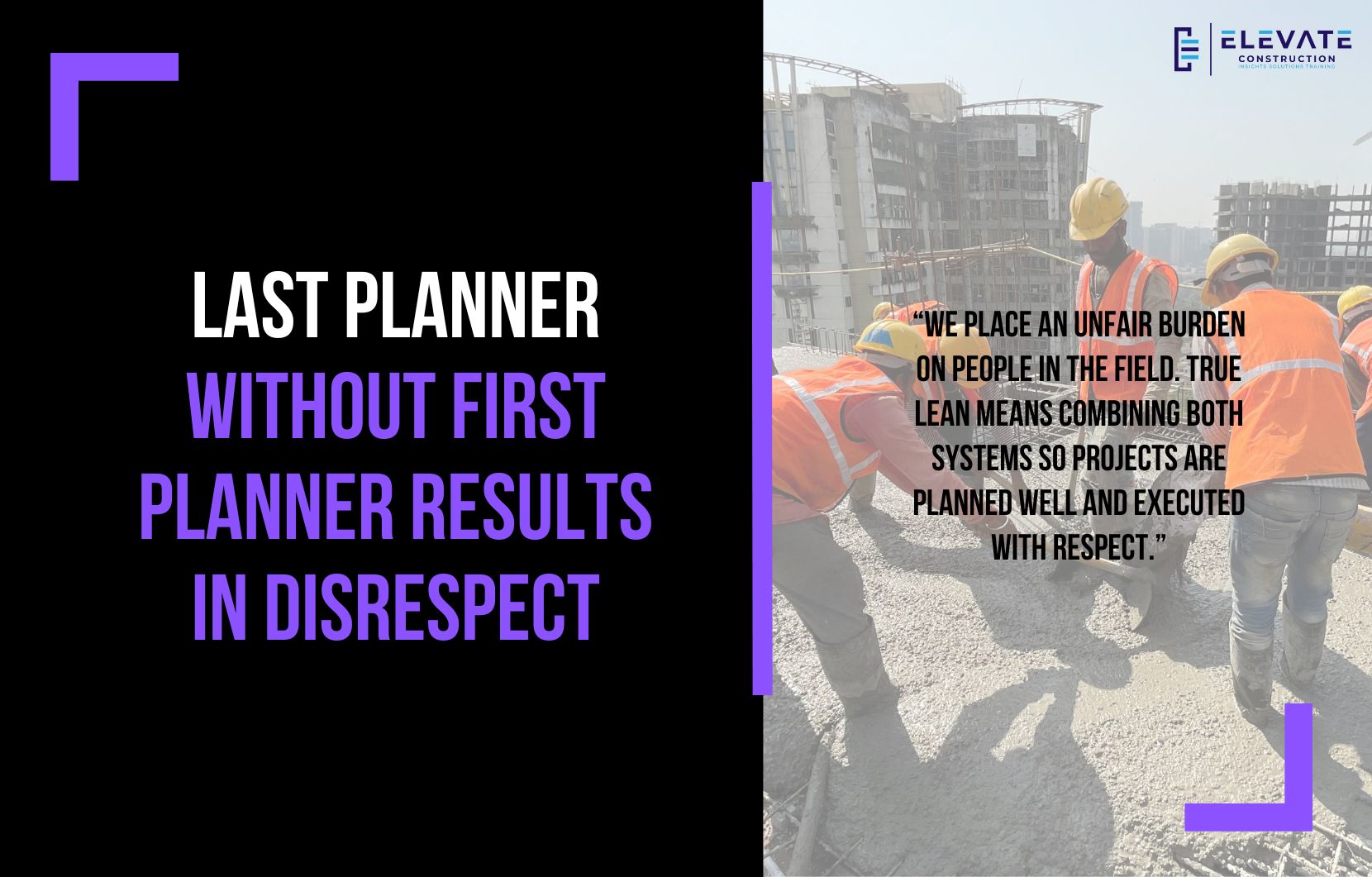Last Planner Without First Planner
I have been reflecting on something that comes up again and again in the industry. Many builders and even some lean advocates talk about the last planner system as if it stands alone. But the truth is, without the first planner system, the last planner system cannot succeed.
Why the First Planner System Matters
The last planner system is powerful. It creates a structure of meetings and huddles, brings trade partners together, and establishes commitments through look ahead planning, weekly planning, and daily huddles. It also encourages respect for people and collaboration. But none of this can work in isolation.
Planning requires resources, information, materials, tools, and logistics to be coordinated in advance. Without the first planner system preparing the production system during preconstruction, we are essentially throwing the responsibility over the wall and asking last planners to succeed without support. That is not lean. That is not respect for people.
A Misunderstood Concept in Lean
I recently received some criticism from people in the lean community who argued that early planning is unnecessary, that predictive planning and preconstruction should be minimized in favor of short-term adjustments. I could not disagree more strongly. Suggesting that we can simply plan everything in the short term disrespects those who do the work.
When superintendents and trade partners show up ready to build, they need more than meetings and promises. They need logistics, supply chains, and production systems designed ahead of time. Without that foundation, even the best last planner system collapses under the weight of missing resources and unclear processes.
Why Both Systems Must Work Together
The first planner system provides the predictive structure and logistical foundation. The last planner system ensures commitments, collaboration, and accountability in the field. One without the other is incomplete.
That is why I wrote and published the First Planner System book. It lays out every necessary component of a lean production system, shows how to design it in preconstruction, and explains how it supports the flow of work in the field. With both systems working together, we not only achieve efficiency, but we also show true respect for our builders.
Key Takeaway
The last planner system cannot stand alone. Without the first planner system to prepare logistics, resources, and production flow, we place an unfair burden on people in the field. True lean means combining both systems so projects are planned well and executed with respect.
If you want to learn more we have:
-Takt Virtual Training: (Click here)
-Check out our YouTube channel for more info: (Click here)
-Listen to the Elevate Construction podcast: (Click here)
-Check out our training programs and certifications: (Click here)
-The Takt Book: (Click here)
Discover Jason’s Expertise:
Meet Jason Schroeder, the driving force behind Elevate Construction IST. As the company’s owner and principal consultant, he’s dedicated to taking construction to new heights. With a wealth of industry experience, he’s crafted the Field Engineer Boot Camp and Superintendent Boot Camp – intensive training programs engineered to cultivate top-tier leaders capable of steering their teams towards success. Jason’s vision? To expand his training initiatives across the nation, empowering construction firms to soar to unprecedented levels of excellence.
On we go

